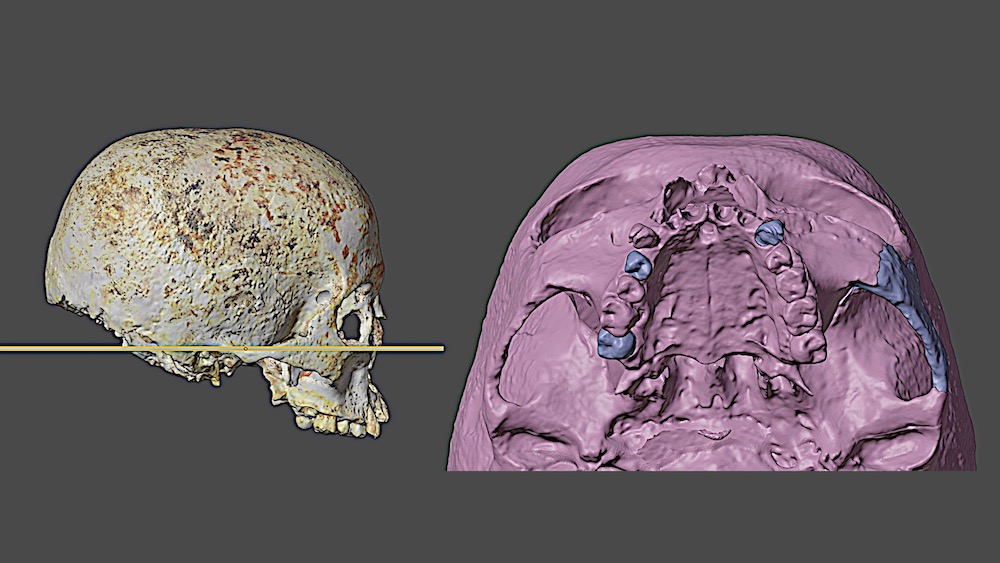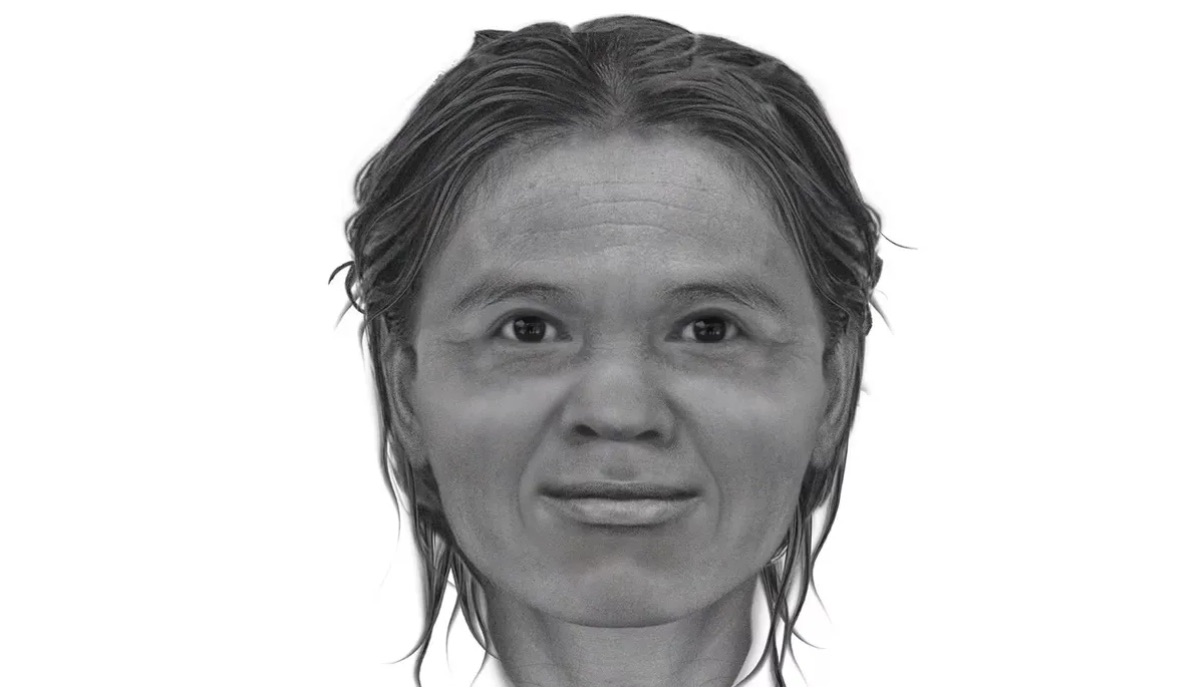Facial reconstructions help the past come alive. But are they accurate?
DNA analysis is changing the science of facial reconstructions and making them more lifelike than ever before.

The man gazes straight ahead, his eyes as dark as coals. His nose juts prominently from his tan face, which has become creased with wrinkles over time. Tufts of gray hair sprout from his balding head. He could be anyone — a neighbor, a parent, a friend.
In fact, this man was one of ancient Egypt's most powerful pharaohs, Ramesses II. The 19th-dynasty king ruled for 66 years, beginning in 1279 B.C., and his likeness has been chiseled into colossal statues and printed in textbooks around the world. But until recently, only those who met the man knew what he looked like.
But earlier this year, researchers digitally reconstructed the iconic king's face using a CT (computed tomography) scan of the pharaoh's mummified skull. The final image brought to life a ruler who had died millennia earlier.
Related: 40 amazing facial reconstructions, from Stone Age shamans to King Tut
For decades, researchers have created facial approximations of people from the past, from iconic historical figures, like King Tut and English king Henry VII, to ordinary individuals lost to time, such as an unnamed Stone Age woman and a Neanderthal man.
But how well do these approximations capture what the people looked like in life? And is there any way to measure their accuracy?
Studies with real people suggest that facial approximations do a good job of making recognizable images. But the accuracy of these reconstructions can devolve to guesswork when fossil skulls are damaged. What's more, researchers sometimes use opaque or biased datasets, which can limit a reconstruction's accuracy. Still, new DNA extraction and analysis techniques are making reconstructions more accurate than ever by ensuring that ancient people are depicted with the right hair, skin and eye colors.
Get the world’s most fascinating discoveries delivered straight to your inbox.
"I think DNA has been, and will continue to be, the game changer for facial reconstructions," Oscar Nilsson, a Stockholm-based forensic artist, sculptor and archaeologist, told Live Science.
How facial reconstructions are made
Most facial reconstructions begin with a skull. In many cases, that's all artists have.
"Often portraits and busts of these individuals don't exist, and there aren't even written descriptions that tell us what they looked like," said Caroline Wilkinson, director of U.K.-based Face Lab, which created the recent Ramesses II likeness and operates out of Liverpool John Moores University.
Like Wilkinson, Nilsson uses the skull as the foundation for the final image, taking measurements to get an approximation of the person's face shape. In his career, he has created a range of likenesses, from a mysterious Bronze Age woman found buried in a crouched position in a quarry in Scotland to an Incan teenager known as "Juanita" or the "Ice Maiden" who died more than 500 years ago as part of a sacrificial ritual.
I think DNA has been, and will continue to be, the game changer for facial reconstructions.
Oscar Nilsson
For Nilsson, the CT scan is like the scaffolding he uses to build a facial approximation.
"It's like getting a scientific frame — the tighter the better — and within this frame I get to use my artistic skills to bring out a living, believable face," Nilsson told Live Science in an email.
From there, most researchers use databases of CT scans of living people — often called donors — to help determine the positioning of things like facial muscles, fat and skin. Depending on how comprehensive the database is, forensic artists limit their searches to people of a certain sex, age and ethnicity so that the features better match their subject. They then create the final approximation using computer software (or, in some cases, clay or silicone).
Forensic artists often collaborate with archaeologists and historians. For Ramesses II, for instance, Wilkinson worked closely with University of Cairo Egyptologists to understand the ruler's social status, lifestyle, and common dress and hairstyles.
"The more information we have on how someone lived, the better we can portray them," Wilkinson told Live Science
Related: See stunning likeness of Zlatý kůň, the oldest modern human to be genetically sequenced
Reasonably accurate
Studies show these reconstructions can be fairly good. For instance, in one study, researchers at Face Lab used skull dimensions to approximate the faces of a living woman and man, and then asked 52 volunteers to pick the real face from a group of five photographs of people of the same sex, ancestry and age. Most volunteers correctly matched the real face with its approximation.
During her time as a visiting scientist at the FBI, 3D biological anthropologist Terrie Simmons-Ehrhardt analyzed the accuracy of a reconstruction program called ReFace. The program compared data from hundreds of CT scans with the corresponding photos of living American adults.
While the reconstruction program tended to underestimate mouth width and overestimate lip thickness and nasal length, it captured overall face shape well. And an automated facial recognition program correctly identified between 77% and 83% of known-approximation pairs as matches.
Realistic picture or creative license?
Still, reconstructions have limitations. Archaeological skulls are often badly damaged, decomposed or incomplete. In the case of a Bronze Age woman known as Ava, who lived in Scotland 3,800 years ago, the skull lacked a mandible.
So, for his 2018 reconstruction of Ava, Cícero Moraes, a Brazilian graphics expert who regularly collaborates with local police to create facial approximations of crime victims as well as creates historical facial reconstructions, used data from CT scans of living donors to give her a new jaw. But it's not a perfect process.
"Depending on what is missing, it's possible to reconstruct such a structure — but the level of uncertainty increases," Moraes told Live Science in an email.
Other aspects may be complete guesswork. Features such as beards and body weight influence our perception of a face enormously but often can't be predicted from archaeological findings, Nilsson said.
Related: Look at the face of the 'Jericho skull,' buried 9,000 years ago with shells for eyes
This artistic interpretation is where historical reconstructions, as opposed to forensic ones used to build criminal cases or identify John or Jane Does, often fall short, Simmons-Ehrhardt said.
"Artists are putting in subjective information," she told Live Science.
As a result, when people are asked to match real faces to approximations that contain subjective features such as hair color when no DNA was analyzed, "the results aren't that great," she said.
Acknowledging biases
Facial approximations may also be skewed by biases in the underlying datasets. When Susan Hayes, a research fellow in the Centre for Archaeological Science at the University of Wollongong in Australia, tried to reconstruct a Stone Age woman who lived 13,000 years ago in what is now Thailand, she found that many face databases were limited to images of living people with European ancestry.
This can dramatically reduce the accuracy of some reconstructions. For instance, using skull dimensions to estimate ancestry failed 80% of the time for individuals of "mixed" ancestry, a 2021 study in the Journal of Forensic Sciences found. Researchers can minimize the impact of this bias by using global databases with subjects from around the world, Hayes wrote in a 2017 study in the journal Antiquity.
"This way, you're applying the most robust data available to the approximation," Hayes told Live Science. "Often I will compare different databases when creating an approximation."
For instance, for her reconstruction of the Stone Age woman, Hayes narrowed her search to women of the same age and ancestry. But even then, it can be tricky to compare a modern-day person to someone who lived thousands of years ago; she noted that, on average, Stone Age people had larger jaws and bigger teeth than modern humans do.
The future of facial approximations
New tools are making reconstructions more accurate than ever. It's possible to predict not only hair, eye and skin coloration from DNA, "but also a number of details in the face, like genetic predisposition for baldness, eyebags, etc. Even the overall shape of a face can be estimated in this way," Nilsson said.
For instance, DNA analysis dramatically transformed Moraes' final picture of Ava. In 2016, forensic artists created a likeness of Ava with light skin and blue eyes. But DNA extracted from her remains revealed that she most likely had brown eyes and black hair and that "her skin [was] slightly darker than today's Scots'," researchers wrote in a 2017 study.
It's very interesting to see them together. They look like brother and sister.
Oscar Nilsson
So Moraes made sure his reconstruction of Ava reflected this new knowledge.
DNA can also reveal nose width and shape, hair texture and even unibrow presence or beard thickness, a 2022 study found. And through analysis, DNA could potentially reveal even more details about an individual.
In fact, DNA analysis recently helped Nilsson ensure the accuracy of one of his approximations. In 2006, he created an image using the skull of a human who was aboard a Swedish battleship that sank in 1628. Researchers nicknamed the individual Gustav.
"The osteologists thought it was a man," Nilsson said. "Studying the skull, I agree[d] it was more male than female."
However, DNA proved them all wrong.
"Just a year ago, new DNA analyses were made showing that 'Gustav' lacked a Y chromosome," he said. "So I made a new version, this time named 'Gertrude.' It's very interesting to see them together. They look like brother and sister."
The DNA also revealed that this person was much younger than previously thought.
"To get the facts right from the beginning is essential," Nilsson said.
Jennifer Nalewicki is former Live Science staff writer and Salt Lake City-based journalist whose work has been featured in The New York Times, Smithsonian Magazine, Scientific American, Popular Mechanics and more. She covers several science topics from planet Earth to paleontology and archaeology to health and culture. Prior to freelancing, Jennifer held an Editor role at Time Inc. Jennifer has a bachelor's degree in Journalism from The University of Texas at Austin.






